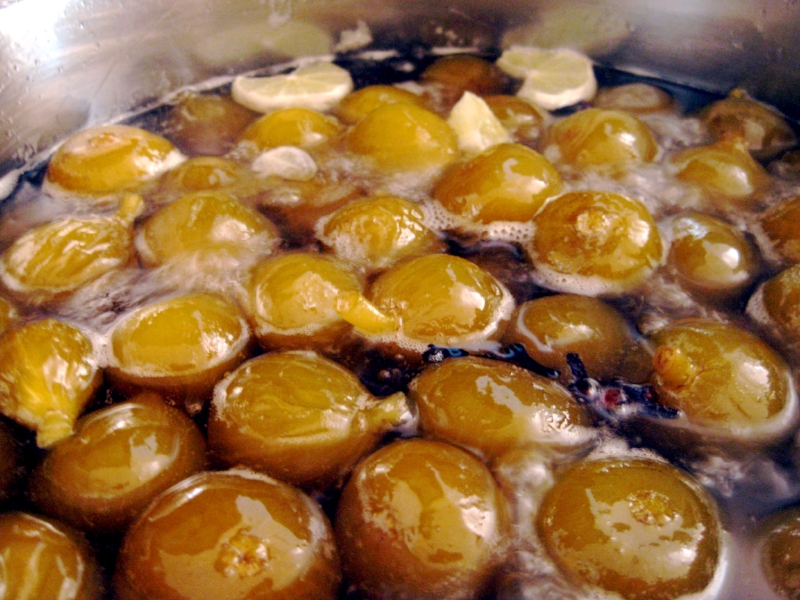Fig Jam
I don't know why fig jam was such a fixture of my childhood, but it was everywhere. I remember my mom coming home with her regular shopping, which she carried from the car to the door and then rang the doorbell for us to transport the heavy plastic bags to the kitchen, with a bonus: a 10 lb. cardboard box of fresh green Calimyrna figs.
The box was plopped onto the white marble kitchen floor, waiting to be turned into a thick, syrupy jam that filled endless large glass jars. Those jars were then stored both in the house and the garage.
We would have a supply that would last a year, sometimes two.
I would see snippets of the process - the figs coming home, the figs being washed, the figs being drowned in a sugar bath overnight and then cooked for hours and hours as the sweet and spicy smell filled the house.
We would use Calimyrna figs, a variety that I would later find out was significant for two reasons:
• The name is a combination of California and Smyrna, the city in Turkey which they originally hailed from (now known as Izmir). Smyrna, which sat on the Aegean coast was a Greek city captured by the Ottomans in the 14th century and had a significant Armenian population. The city was destroyed and its Greek and Armenian populations murdered during the genocide.
• The Calimyrna, which thrives in California's Central Valley to this day and is exported across the country, would probably not have existed if it wasn't for an enterprising Armenian immigrant named Henry Markarian who came over in 1882 from the Ottoman Empire, first started a 160-acre fig orchard and then teamed up with a real estate developer from Kansas to create the genesis for California's fig industry. It's an amazing story about a pioneer and his influence on the agricultural industry that changed the Central Valley forever, but more on this later.
Figs and jam made of figs are special to many communities and countries in the world. Known as "tooz" in Armenian and "anjir" in Farsi, the jam made in my house blended these two cultures distinctly together. The finished product included the figs, now brown and soft, but completely intact, drench in the syrup they produced. This set it apart from all jars I would see in American supermarkets. Browsing the aisles, looking at orange suspended jelly and pulverized remains of strawberries and blueberries, I couldn't figure out why Americans were so afraid of actual, whole fruit.
On Sunday mornings, I would place one whole fig on a piece of buttered Middle Eastern bread and snap it in half with my fork, crushing each side deeper into the buttery, doughy canvas.
It's another one of those memories that has resurfaced in adulthood, taunting me when I miss home, or my mom, or that feeling of familiarity.
There are many variations when it comes to this recipe - some add lime, other cloves, cinnamon or cardamom to spice up the flavor. Some might even (gasp) crush the figs so the jam is actually spreadable.
Fig Jam or Preserves
4 lbs. fresh green Calimyrna figs
7 cups sugar
5 cups water
Pinch of cloves
1/2 lime, peeled and cut in slices
1. Wash figs without cutting stems.
2. Place figs and sugar in a laminated pot and then add water. Simmer for about 1 hour over medium heat.
3. Add a pinch of whole cloves and sliced, skinless pieces of lime.
4. Let simmer over medium heat until syrup is thick enough to coat the back of a spoon.
5. Sterilize jars in boiling water and then dry them. Fill with hot fig preserves and seal well. Store in a cool, dry place.


